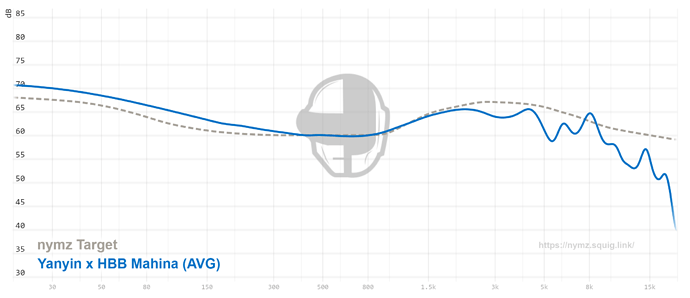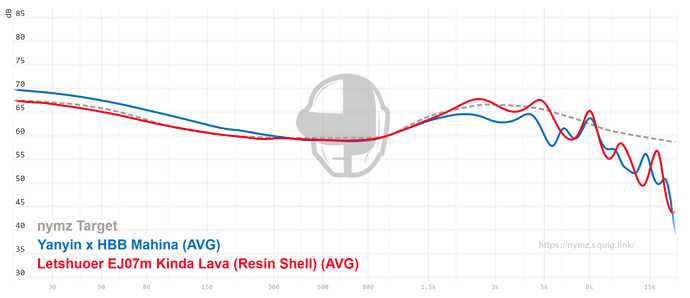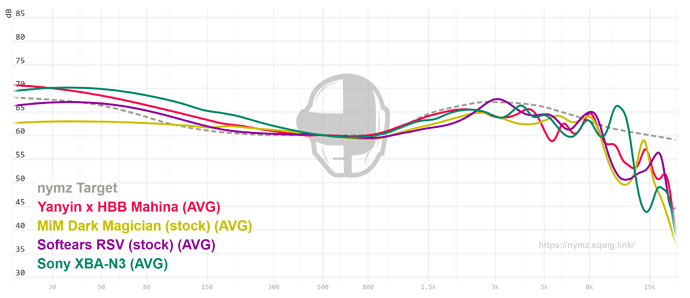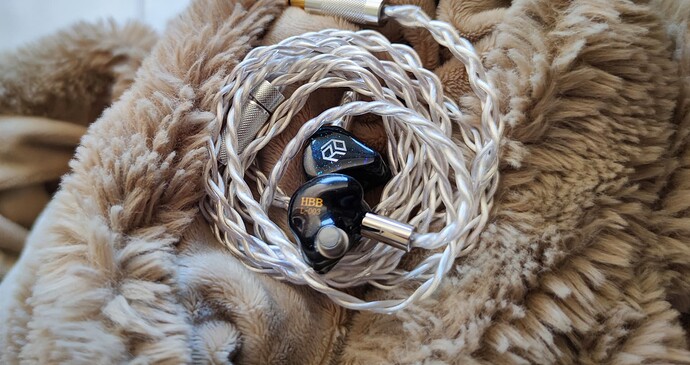It’s never about who came first, but who stayed the longest.
Is this how you got 2 kids? ![]()
Third is the charm!
Congratulations dude, at the other end now mine are 21 and 16 it’s a ride for sure.
Thanks! Oh, I already fear those times, ahah!
To everyone that says reviewing is easy and quick, present them my next post… Once I can get all the formatting done…
It´s happening…

Burning the candle at both ends here, I have one at 20 and the other at 3 ![]()
Yanyin x HBB Mahina - Musically born
Head-fi link
Pros:
Immersive and musical
Great bass shelf
Tastefully tuning overall
Stage depth
Accessories
Cons:
Bass texture could be better
Not for treble or clinical heads
Disclaimer: This unit was provided by Linsoul for free in exchange for a written review. No incentives of any kind were given and the review you are about to read are my own thoughts and opinions. Thanks once again to Linsoul for the opportunity and support.
Driver Setup: 1DD + 4BA + 2EST
Price: $650
Purchase link and info: Linsoul
Included in the box:
- Mahina
- 2-Pin Graphene Silver-Plated Cable with 3.5/2.5/4.4mm termination of choice;
- 3 Pair of silicone tips;
- Storage case;
- Suede pouch;
- 3.5mm to 6.35mm stereo adapter;
- Airplane adapter;
- Warranty and paperwork.
Comfort, fit and isolation: One of the best ever - perfect.
Source used: Topping E30 + L30 stack, Questyle M15, Qudelix 5k
Tips used: BGVP W01
Test playlist with some of the songs used: Tidal
Prologue
Just like 2021, the year of 2022 is all about either collaborations, planars, good budget or all of the above at the same time. Hawaii Bad Boy (HBB) is no stranger to that and seems to be on a collaboration rampage. Tagging along with Yanyin, a now known brand for models like the Aladdin and the Canon, HBB chose their last release as a canvas, the Moonlight.
Yanyin Mahina (Mahina), which means moonlight in Hawaiian, is the second tribrid with HBB’s logo on it, right after the Kinda Lava. As a full disclaimer, I have never had the chance to heard the Moonlight and neither will I be able to compare it to Mahina, but I will be able to compare it to Kinda Lava down below.
A justified paragraph goes into the visual aspects of the set and its accessories. From the best storage case ever to the beautiful and full of quality cable, nothing was left underlooked to match one of the most beautiful and best fitting IEMs I have ever got my hands on. The case is big and serves as storage only, not for everyday carry, but god I do need one for each of my beloved IEMs in the future.
Before diving right into the sound, a quick author’s note: this review will be different from my standard ones as I want to adopt the same style of review HBB does, given the ocasion. Also a disclaimer that despite my relationship with the tuner, no words about this set were shared other than logistics updates and photo sharing. HBB did not try to influence in any way shape or form my take of this set and no I have no monetary incentives to do so.
From now on, enough words, let the music roll!
Sound
Since I’m adopting HBB’s style of review, instead of talking you through the sound by just words, I will use even more music queues than usual to help you conceive a correct picture of Mahina. If you want more detailed info about some of the tracks I use, you can check it on my spreadsheet, under the “Test Tracks” tab.
Sub-bass
Hans Zimmer - Why So Serious?
This now modern classic around the audiophile world is a great track to check for the sub-bass rumble and texture. What we will look for is the low tones starting around 3:26m. Once the drop happens, Mahina gives the replay we are looking for here which is a good extension, rumble and a somewhat claustrophobic sense.
The sub-bass is just one of my favorite traits of the Mahina and this track just puts amongst some of the top replays I have experienced up its price point.
The same exercice can be done using tracks like:
Deadmau5 - Hypnocurrency (Intro)
Jay Cosmic - The Tunnel (0:58m drop)
Mark Lettieri - Magnetar
Mid-bass
Mark Lettieri - Magnetar
The most important bandwidth sharing for me and my library happens in the mid-bass region, when bass guitars and kickdrums play together. Right from the intro, Magnetar is a great example of an epic bass line supported by the drummer and it’s also where stuff can get messy, especially on warmer tunings. Essentially, what we are looking at here is just not the elevation itself (positioning) but also the micro dynamics of the driver.
The Mahina mid-bass position is around my prefered elevation for a warmer tuning, as more than this crosses balanced line for me (Sony N3 is a good example of how much is already a bit too much for me), positioning the instruments in this region just right and giving them some sense of empowerment without feeling the sense of bloating the rest of the frequency. Regarding the micro dynamics of the mid-bass, I would consider its speed a nice middle of the road compromise that neither feels too tight or too loose, making it a great all-rounder for genres that need a touch of both. Impact and texture are there and certainly above average, but Mahina isn’t the best example of these two characteristics, and I’ll come back to this personal nitpick down below.
Other tracks used for this region analysis:
GoGo Penguin - Raven (same as Magnetar, pretty much)
Ulf Wakenius - When God Created The Coffee Break (Bass and drums lines position in the overall tonality)
Elise Throuw - How To Get What You Want (Live Loop) (Intro - Pedal power and slam)
Radiohead - Packt Like Sardines In A Crushd Tin Box (Bass beat in the background right from the start and throughout the whole song. Elevation and impact)
Mid-range
Hania Rani - Glass
Using pianos to check the mid-range? Guilty as charged!
Throughout Hania’s songs, she uses mics pointed directly at her keys to record the sounds whenever she presses a key, making songs like Glass have multiple layers. I like to use these records not to just evaluate the note weight of the mid-range but to also check for transparency and details.
Mahina has the mid-range forward but very well done: despite the position, you still feel they are not screaming in front of you or even masking the rest of the spectrum, something I really appreciate as a mid-head and with a mid-heavy library. The mids have the right note weight and warmth to not feel overly thin and are slightly north of my perceived neutrality, being musical but still retaining every stroke detail there, and most importantly on this specific case, being very audible and not sent to the background or meshed (separation/layering) with the sound of the notes themselves.
This mid-range is something I consider very close to my prefered slightly warmer tuning, and for that I have not a single thing to point out but to appreciate it.
Couple more track examples to check this range:
Nils Frahm - Says (same parameters than Glass)
Nils Frahm - All Melody (Same as above, but with the introduction of keyboard/electronic factors and reverbs)
LITTLE TEMPO - Little Journey (Mid heavy song, check for overall separation/balance, mid-range position and dynamics)
Yann Tiersen - Comptine d’un Autre été: L’Après-Midi (Tonal balance, note weight, note sustain, dynamics)
EWF - September (Mid heavy song with vocals, check for overall separation/balance, mid-range position and dynamics)
Dire Straits - Walk of Life (Intro - Synthesizer/keyboard position and transparency)
[Album] Lorde - Pure Heroine (Mid-range everywhere throughout the whole album. Great to also check stage and holographic factors. One of my favorite albuns for mid-range checking)
Vocals
Agnes Obel - The Curse
One of my favorite tracks of all time due to its complex simplicity: Vocals and piano, a viola and a cello.
This is usually the first track I play on any new set and it will give me a lot of info about my preferences. If the bass presence is too low the cello will feel left out; if the pinna-gain region isn’t well done the vocals will sound off; if the upper regions aren’t well done the viola and the air will feel cutted off.
Mahina exhibits very well all the above into a very relaxed replay, feeling intimate (I don’t mean the stage). Agne’s vocals are spot on as well as its reverbs/back vocals, just lacking a hair of more bite and decay for my perfect replay, but well done nonetheless. It also shows some nice indications of the above average stage depth we will talk about shortly.
Other test tracks used to check for vocals:
Pentatonix - Daft Punk (Female and male vocals, multiple sounds and layers, different voice timbres, beatbox)
The Dead South - In Hell I’ll Be In Good Company (Male vocals with different timbres)
Michael Bublé - When I Fall In Love (Male vocals, look for clarity and throat details)
Jacintha - Danny Boy (Intro up to 2:38m - solo female vocals, looking out for vocal details like voice cracks, lips and breathing)
Treble
David Carroll - Hell’s Bells
High pitch and metallic sounds everywhere. The focus is to find if something stands out of the ordinary (peaks), if something is too boosted (fatigue), how the treble extends and how it decays.
Mahina does what she does best: keeping the information while being relaxed and immersive. During my tests nothing standed out, which some will call boring but me, being treble sensitive, called just right. This is the region where I also found out that despite the somewhat subdued treble region, the sheer detail of the set is amazing given the warm tuning. Brighter sets will give a sense of more perceived detail or clarity, but after A/B, the information is still there, just presented differently.
This is where a set lives or dies for me and the best answer I can give you is that I’ve been able to use Mahina for 12h straight with only small breaks. Touché.
Some of the other tracks used to check the treble on Mahina:
Max Richter - Vivaldi Four Seasons, Winter 1 (Violins starting at around 1:14. Check for any sharpness and decay)
John Wasson - Caravan (Cymbal strikes elevation and decay)
Larnell Lewis - Change Your Mind (Electric guitar and cymbal strikes. Checking for any sharpness)
Checking for problematic zones

Fleetwood Mac - Dreams
Right off the bat, at the start of the song, a cymbal strike comes out and if the 5k hz region is too elevated it crashes my ears. After that I check for any kind of sharpness or shout on Steve Nick’s voice along with the occasional cymbal strikes, especially in the chorus. Mahina passed the test with flying colors, showing also good separation between the main vocalist and the back vocals.
Iggy Pop - Lust For Life
Lust for life starts with a big multiple instrument solo before Iggy’s vocals kick in at around 1:12m. During this time, I can get a good sense of the treble elevation and believe it or not, get fatigued. Overly bright sets die to my preferences on this track and Mahina did it just right, adding that last leg of warmth these types of classic records need.
Polyphia - Playing God
From a classical to a modern track, Polyphia complex skill showoff isn’t easy for every pair of headphones, especially in the balance and dynamics department. Mahina showed above average macro dynamics but a slightly over tuned bass line for the genre not helped by its middle of the road speed and tightness. I would not recommend Mahina for progressive metal if you like a clean analytical presentation.
Adele - Daydreamer
Starting at around 1:05m, I’m looking for the shoutiness in Adele’s voice. Mahina did just not pass that with flying colors but was one of the best sets to tame it down that I’ve heard.
Gesaffelstein - OPR
During the intro and first drop, I use OPR to check for bass articulation and texture. During this track I found my only setback with Mahina’s technicalities: its bass texture is average. It’s not bad, but it’s also not top tier. Other than that, the overall presentation of the song is indeed top tier thanks to its bass tuning and a joy to press replay on.
Ghost-note - Shrill Tones
Given Shrill notes is one of my favorite jazz songs and I know it pretty well, I use it to check on the overall presentation and to check for any info missing. Mahina, as expected, turns the jazz session into an old school sweaty jam that keeps your groove going and unable to sit down. Although I still would take single DDs for its timbre and a more balanced or brighter tuning for jazz tracks, I’m guilty of enjoying warmer presentations sometimes, especially on parts like the Mononeon’s solo around 3:21m.
If you are looking for a bright accurate set for Jazz, Mahina might not be for you. But it will make you dance if you don’t.
Kendrick Lamar - Backstreet Freestyle
I don’t usually delve deep into hip-hop or rap, but Kendrick I do enjoy and respect.
Backstreet Freestyle lets me check for a couple of things: the sub-bass pan through all the song, the bells in the background and vocal position.
Mahina didn’t just pass the test, she made a statement. This is the best genre I’ve tried with this set. The sub-bass elevation and the medium tightness of the bass are just a chef’s kiss for the genre, which makes sense given HBB’s Library.
Yosi Horikawa - Bubbles / Crossing
Yosi tracks need no introduction: the imaging chops trademark.
While being good on stage width, it was the depth that completely got my attention as being very good. If you add that to a good imaging and holographic psychoacoustics, Mahina has one of my favorite stage presentations until its price point.
Philipp Gorbachev - 5Th New Century Ft. Polina (Len Faki Hardspace Mix)
Last but not least, I could not leave the room without touching my roots: techno.
Techno is one of the last things I try on any set because if passes more demanding genres, it might as well pass this one. Since it is my roots, I usually just check for tonality balance across the spectrum and bass authority - and oh yes, is Mahina authoritative. Allied to separation and stage depth, the bass just feels the room and speakers come in. Back to the nightclub we go!
TL: DR Sound Overview
We already used music to talk about the tuning, but now I will make a very short overview of the sound characteristics to make sure nothing was left out and for ease of reading.
Mahina is what I would call a mild L-shaped tuned IEM. The prominent star of the show is of course the bass, tastefully done by a nice glide that corrects itself around 300hz, turning the tuning into the warmer side of the spectrum. This glide will affect the rest of the tuning, mainly the mid-range, bringing up the note-weight of the harmonics, needing a well done pinna-gain region and treble to back it off and not feel overly warm or dark. This was also accomplished by extending the treble region, which also allows Mahina to be very immersive and musical. For those looking for a clinical tuning or more energy uptop, these ain’t for you.
As for technicalities, they are in the same ballpark as the other tribrids in this price range, which is actually a standout given the tuning, especially in the stage depth department. The nitpicks will have to go into mid-bass texture, that could be better, but good nonetheless.
With all the above said, the presentation is extremely smooth and can be enjoyed for very extensive sessions.
Comparisons
- LETSHUOER x HBB EJ07m Kinda Lava (resin shell, W01 tips)
In general, the LETSHOUER x HBB Kinda Lava (KL) is more balanced while the Mahina is warmer, filling different spots in my collection and adapting better for different genres. The main differences, as the graph will show, will be on the bass shelf and the upper mids/lower treble region.
On actual sound analysis, starting with the sub-bass (Why So Serious @ 3:25m), the extra elevation of Mahina helps to get a better rumble and claustrophobic feeling, which is no surprise, as I feel the real difference comes into the mid-range transition.
The mid-bass is where these two turn into a pickle: The Mahina has better prominence and will replay better bass guitars and kickdrums (Magnetar, Shrill Tones), where the KL shows a better controlled and textured bass (OPR, Playing God). It’s not to say, as mentioned above, that the mid-bass on Mahina is bad, but the DD on Kinda Lava feels more textured and articulated. The pickle sums up to me preferring the Mahina bass replay, but wishing it had a tiny bit more texture like the KL.
The mid-range tuning only varies in the note-weight due to bass differences (Glass, Says), with Kinda Lava being more in your face presentation and sometimes shadowing other frequencies in comparison to the Mahina (Little Journey) that is more relaxed and immersive, mostly due to the pinna-gain region. The upper-mids difference is what sets them apart as well on the vocals, with the replay of female vocals (Daydreamer) on Kinda Lava being more energetic and with a touch more bite, where the Mahina feels more smoothed out and better controlled, which I prefer.
Once we get into the lower treble region, those who prefer more energy on cymbal strikes (Dreams, Lust for Life) will choose the extra energy of the Kinda Lava, but due to my preferences, the energy and decay on Mahina take the cup. From that region and upwards, they are pretty much the same extension wise (Hell’s Bells), with the Kinda Lava having a touch more of perceived details due to the the clarity offered by the lower bass shelf, but I’d say that other than the treble boost, the actual micro details are on pair if not better on the Mahina.
Since we already touched the technicalities, might as well end with it. In short, I feel that they will be around the same ballpark, like most capable tribids around this price range, other than tuning influence.
The Mahina has a better stage presentation than the KL due to the depth of it, while the other has a hair of better imaging (Crossing, Bubbles). Macro dynamics feel a touch better on Mahina where the micro dynamics of the bass are better on KL as explained above (Playing God). The decay is close and goes around the usual tribrid implementation, still lacking that sweet timbre of the DD master race (Winter 1, Dreams). Separation and layering fall into Mahina’s side of the turf, where the Kinda Lava show’s more perceived clarity, both related to differences in tuning.
- LETSHUOER EJ07m
TO BE ADDED IN THE FUTURE. Thanks @igor0203 <3
Quick Impressions vs other sets:
- MiM Dark Magician
Mahina is more technical, which comes out as no surprise due to driver count vs a single dynamic. The treble on both is very reminiscent of each other, with the DM having a touch more energy. The main difference comes down to the bass boost on Mahina vs the lean curve on the DM, with the latter showing better speed and control, and the first showing better impact and sub-bass rumble. The DM is a better all-rounder, especially on vocals, where the Mahina is better suited for bass heavy genres like classical rock and hip-hop.
- Softears RSV
Despite the more perceived bass impact of RSV’s due to the mid-bass focus, the sub-bass is bloodbath on Mahina’s favor and showing the DD vs BA differences. The mid-range and the treble are more energetic on RSV, showing a better replay of vocals, while Mahina throws the punch on the technicalities side of things while containing more perceived clarity.
- Sony N3
Bass dynamics and tuning is better done on Mahina, ruling out N3’s bloatedness and being way more technical. N3 timbre and treble tuning are still a point in its favor over the Mahina but showing one can be an interesting upgrade over the other.
The verdict
Well, it seems this take turned into a longer one than expected, but I hope it is clear what the strong suits of the Yanyin Mahina are. For those who are already used to HBB’s colabs or share his library tastes, they can probably know what they can expect from this set.
I think it’s easy to understand that I really enjoyed my time with the Mahina so far and that I intend to keep it on my collection as the warmer offer. It’s a very musical and immersive set that just lives alongside my other pearls for those mood shuffling days. Harman targetted or sterile sets are easy to find, well done musical ones ain’t so.
This doesn’t go without explaining, once again, that if you have a more clinical based library or you are looking for a sterile replay, these might not be for you, such as K-Pop or progressivel metal. Mahina will shine on Hip-hop, EDM or Classical Rock, as a counter example.
With that to the side, the Yanyin x HBB Mahina gets my recommendation and will now be my default bassy rec around its price point.
Good job @hawaiibadboy.
Value ranking: 4.5/5. Personal rank: A+.
Thanks for reading!
Nice review, once again! ![]()
Comparing it to Kinda Lava in the bass department the difference seems more obvious, but what about EJ07m?
Do you hear much of a difference impact wise?
I am very interested in the Mahina but not quite sure if i can justify getting it in addition to EJ07m
damn bro, i think this might be your best review yet. you dived in and covered it all, really like you adopted HBB’s style with added tracks and explanation ![]()
![]()
![]()
![]()
10 character
Super well-structured review ![]()
![]() You’re one of my favourite reviewers PLEASE start making videos it’ll be extra cash for mini-nymz hahahaha
You’re one of my favourite reviewers PLEASE start making videos it’ll be extra cash for mini-nymz hahahaha
Also, what are the main differences between Mahina and OG EJ07 staging and tech wise? ![]() I’m assuming it’s not as dark as the 07?
I’m assuming it’s not as dark as the 07?
Thanks for the words, means a lot. Spanish, right?
Well, the market is clearly evolving into a more budget pipeline - all you need is to look at the recent releases.
I think we are yet to to experience 300-400€ giant killers. This year I was expecting 600 tribids to flood the market and take shots at kilobucks, but seems planars and budget releases took all the hype.
We should have left it at that time, ahahahah.
In a few words, the 07m keeps the dynamics of the Lava but loses clarity and mid-bass even more. Impact wise both are really close.
If we compare 07m to Mahina, they become really close on the sub-bass but more distant in the mid-bass (trade-off 07m vs KL vs Mahina).
Keep the above with a grain of salt. The reason it’s not in the review is that my 07m was reshelled into my KL so I no longer have it.
Update: check post below ![]()
Thanks a lot, glad you enjoyed it. It comes with two drawbacks:
-
From my experience, most people don’t care about tracks on reviews other than to connect to a reviewer. This has greatly helped me since my library is well extended across all genres, that’s one of the reason like my takes. That or my cookies.
-
This review took loads of time just to format, and usually only looks good on websites like head-fi, since HFGF formating is stuck in the year 2000 and sucks ass. If we ignore formating, the content itself takes a toll and the biggest feedback I’ve always got was to make everything shorter and shorter. I usually cover my back with track listing through the text, this was just a different way to show that - more visual, more focused on music and closer to the Grandfather’s format.
Non-english native + no camera gear + I’d probably rumble for an hour and that’s something I hate to see in every video review. Anything more than 10 or 15 minutes and I just get bored.
EJ is more immersive and darker, scales better with volume and has bigger stage width. The dark part is closer that one might think due to bass difference tho.
The major difference is the focus that mids get on EJ instead of the bass on Mahina (bass dynamics apply the same as KL and 07m). Basicly is a semi-basshead set vs a midcentric, if we ignore the treble. I see them more as of compliments into the same philosophy, but one is bassier than the other.
Review update:
-
Comparison vs other sets - Graph was wrong lol
-
@igor0203 will ship me his EJ07m sometime in a near future so I can do an actual A/B. Once again coming in clutch <3
what i love about track comparison is that if you talk about fatigue and harshness and give a track from your library that present it, i can try and find a track on my library that is similar to this in terms of fatigue and harshness and therefore get a better idea if the iem you are reviewing can suit me or not. it goes the same for vocals presentation and separation which i care much. so over all it helps get a better picture ![]()
Great review, and very helpful for me.
True - but I also like tracks on reviews as it’s another way I can check out artists/genres I’ve never heard, or heard of ![]() , and see if I like them or not.
, and see if I like them or not.
Excellently thorough…thoroughly excellent! ![]()
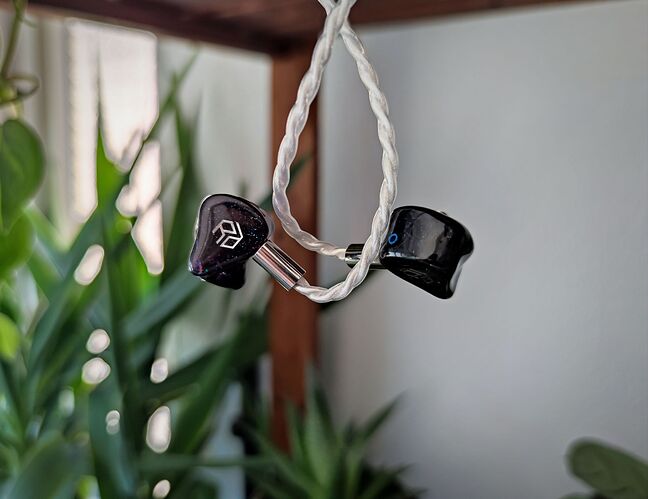
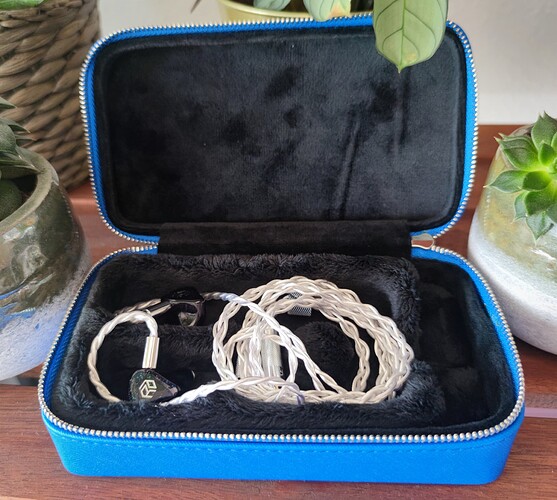
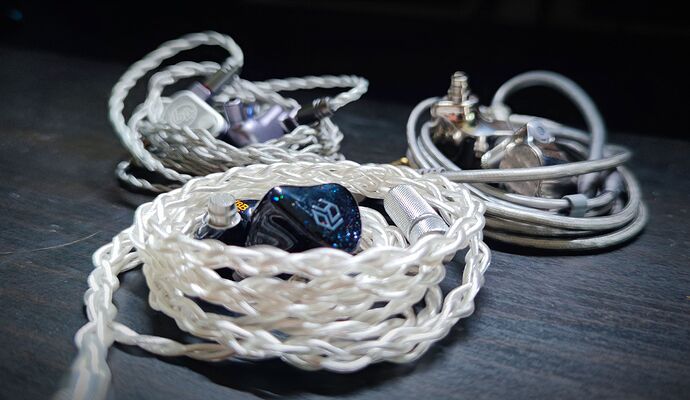














![Philipp Gorbachev - 5Th New Century Ft. Polina (Len Faki Hardspace Mix) [LFRMX005]](https://img.youtube.com/vi/skwCv7SQqCs/maxresdefault.jpg)
